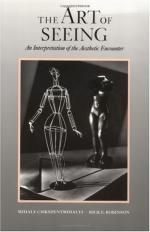|
This section contains 18,434 words (approx. 62 pages at 300 words per page) |

|
In the West, the history of systematic philosophizing about the arts begins with Plato. But his great achievement was preceded, and prepared for, by certain developments in the preceding two hundred years, of which we know or can guess only a little. Thus, the famous aesthetic judgment—if such it was—of the picture on Achilles' shield, "That was a marvellous piece of work" (Iliad XVIII 548), hints at the beginning of wonder about imitation, i.e., the relation between representation and object, or appearance and reality. Plato shows the aesthetic consequences of the thinking on this problem by Democritus and Parmenides. Further, the elevation of Homer and Hesiod to the status of wise men and seers, and moral and religious teachers, led to a dispute over the truthfulness of poetry when they were attacked by Xenophanes and Heraclitus for their philosophical ignorance and misrepresentation...
|
This section contains 18,434 words (approx. 62 pages at 300 words per page) |

|


